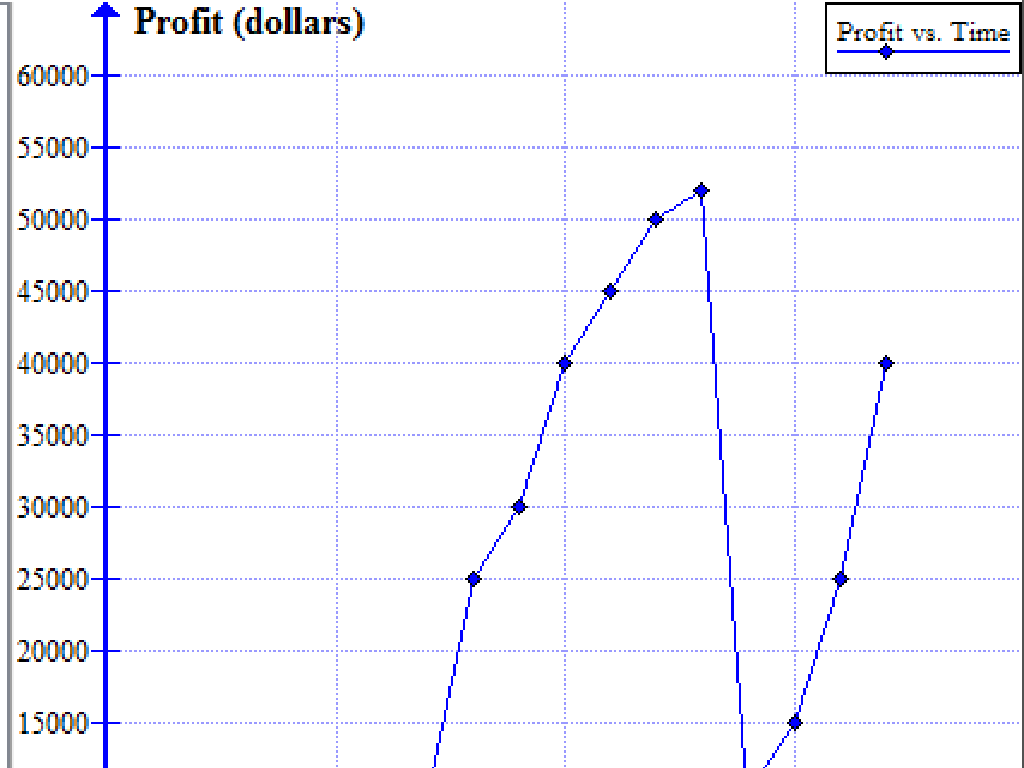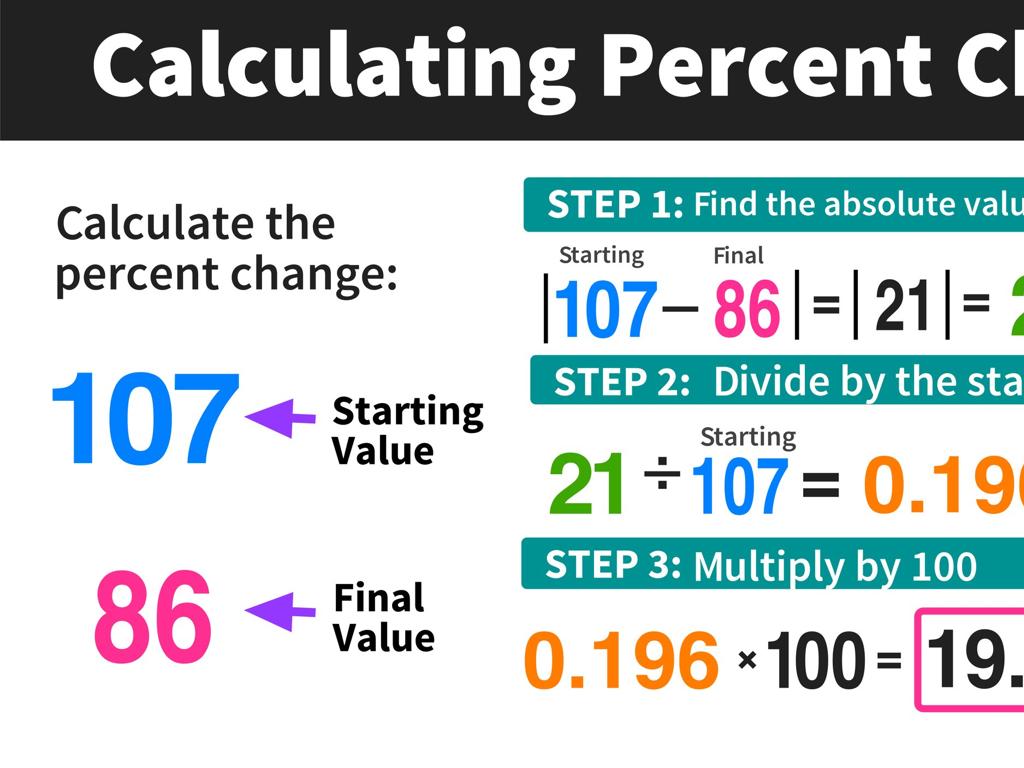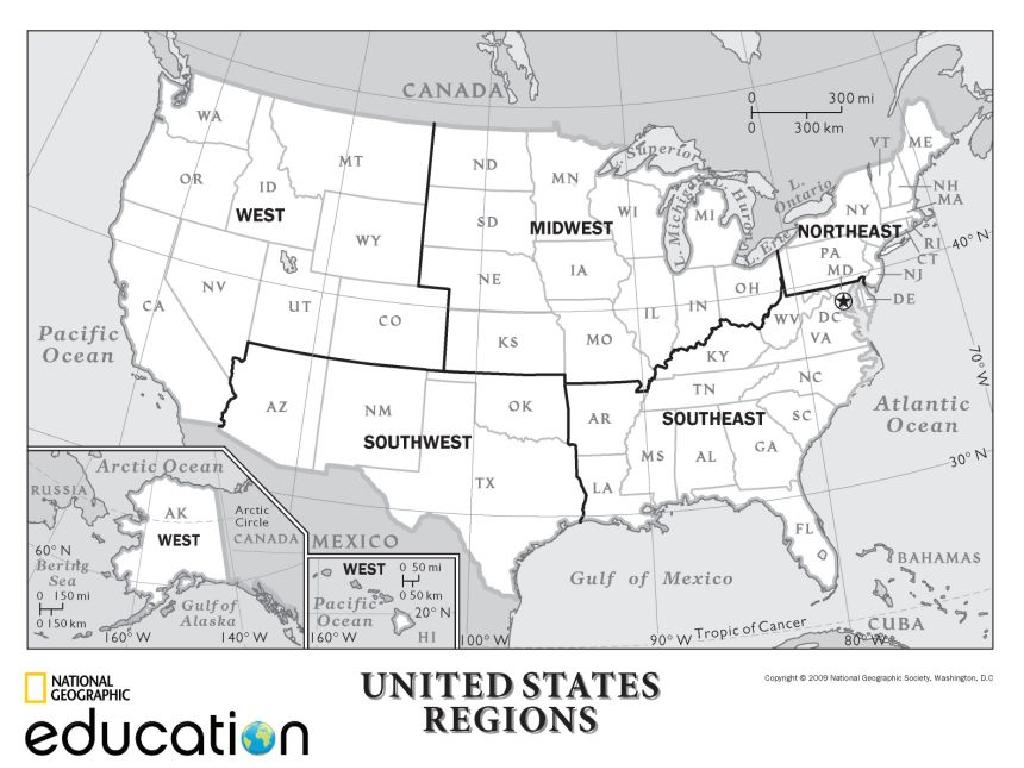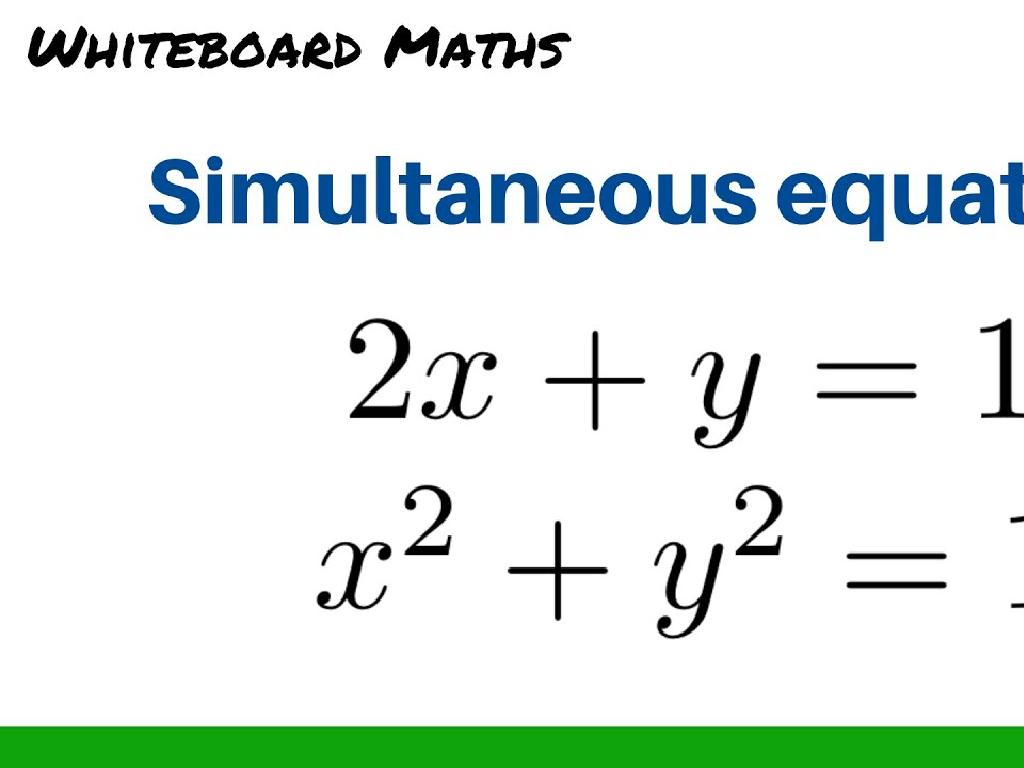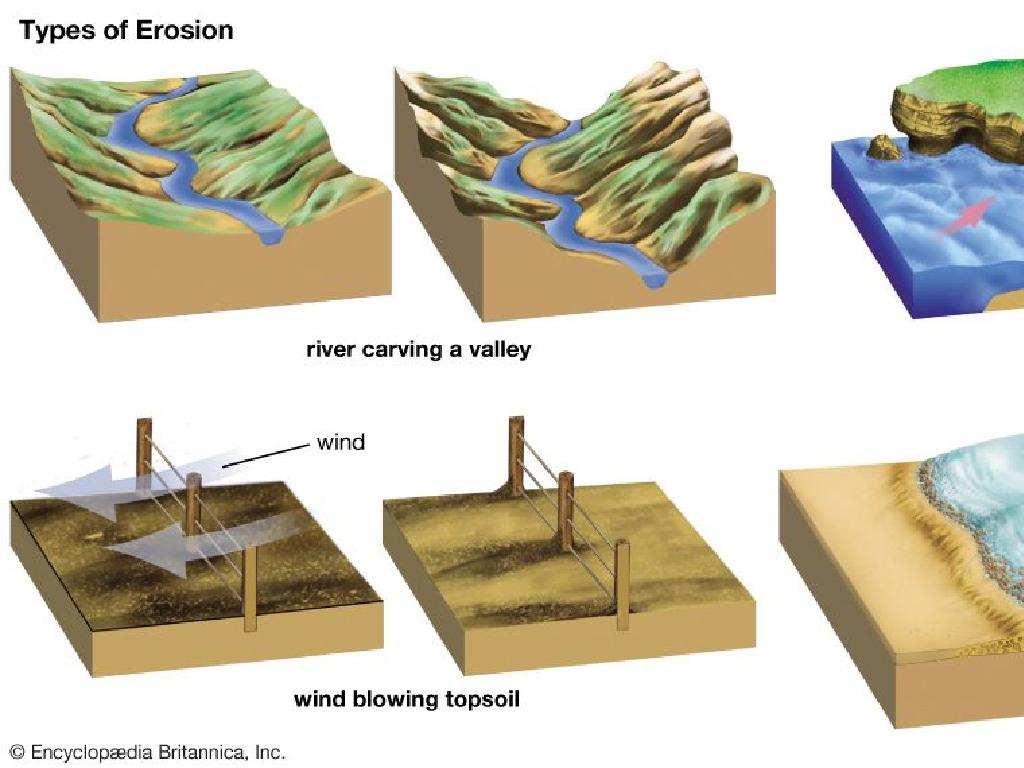Convert Fractions To Decimals
Subject: Math
Grade: Sixth grade
Topic: Fractions And Decimals
Please LOG IN to download the presentation. Access is available to registered users only.
View More Content
Converting Fractions to Decimals
– Understand fractions and decimals
– Fractions show parts of a whole; decimals show them in base 10
– Daily use of fractions and decimals
– Used in money, measurements, and time
– Today’s goal: conversion skills
– Master converting fractions like 1/2 to decimals like 0.5
– Practice with real examples
– We’ll convert recipe measurements and shopping discounts
|
This slide introduces the concept of converting fractions to decimals, a fundamental skill in mathematics that is widely applicable in everyday life. Begin by explaining that fractions represent parts of a whole and decimals are another way to express these parts in a base 10 system. Highlight how both are used in daily activities such as handling money, cooking, and scheduling. The goal for today’s lesson is for students to learn and practice the conversion process. Use relatable examples like recipes (e.g., 1/4 cup to 0.25 cup) and shopping discounts (e.g., 1/3 off to approximately 0.33 off) to demonstrate practical applications of this skill. The notes should guide the teacher through the lesson, ensuring that students understand the relevance and acquire the ability to convert between these two numerical representations.
Understanding Fractions
– Definition of a fraction
– A fraction represents a part of a whole
– Numerator vs. Denominator
– Top number (numerator) over bottom number (denominator)
– Fractions in daily life
– Pizza slices, money, and measurements
– Converting fractions to decimals
– Divide numerator by denominator to get a decimal
|
Begin the lesson by defining a fraction as a part of a whole, which is represented by two numbers – the numerator and the denominator. The numerator, located above the fraction bar, indicates how many parts are being considered, while the denominator, below the bar, shows the total number of equal parts in the whole. Use relatable examples such as slices of pizza to illustrate fractions in everyday life. For instance, if a pizza is cut into 8 slices and you eat 3, you’ve eaten 3/8 of the pizza. Conclude by explaining the process of converting fractions to decimals, which involves dividing the numerator by the denominator. This foundational knowledge will be crucial for understanding the next steps in working with fractions and decimals.
Understanding Decimals
– Define a decimal
– A decimal is a number with a point separating the whole part from the fractional part.
– Decimal place values
– Each place after the decimal represents tenths, hundredths, thousandths, etc.
– Decimals vs. fractions
– Like fractions, decimals are another way to represent parts of a whole.
– Converting fractions to decimals
|
Begin the lesson by defining a decimal and its use in representing numbers that are not whole. Explain the concept of place value, emphasizing the importance of the position of a digit after the decimal point. Compare decimals to fractions to show the relationship between the two, and how they can represent the same values in different forms. Demonstrate the process of converting fractions to decimals by dividing the numerator by the denominator. Provide examples and practice problems to solidify understanding. Encourage students to think of real-life situations where they encounter decimals, such as money, to make the concept more relatable.
Converting Fractions to Decimals
– Divide numerator by denominator
– Use long division for complex fractions
– When the numerator is larger than the denominator
– Example: Convert 1/2 to decimal
– 1 divided by 2 equals 0.5
– Practice with different fractions
– Try converting 3/4, 5/8, and 2/5
|
This slide introduces the process of converting fractions to decimals, a fundamental skill in understanding the relationship between these two forms of numbers. Start by explaining that the numerator (top number) can be divided by the denominator (bottom number) to find the decimal equivalent. For simple fractions like 1/2, the division is straightforward. However, for more complex fractions, long division may be required. Provide an example by converting 1/2 into 0.5 to illustrate the concept. Encourage students to practice with various fractions to become comfortable with the process. The teacher can prepare additional examples and exercises to reinforce the concept and address any student difficulties during practice.
Converting Fractions to Decimals: Practice
– Convert 3/4 to a decimal
– 3/4 equals 0.75
– Convert 5/8 to a decimal
– 5/8 equals 0.625
– Step-by-step conversion process
– Divide the numerator by the denominator
– Q&A session for clarification
|
This slide provides practice examples for students to apply their knowledge of converting fractions to decimals. Start with 3/4, which is a common fraction that students can relate to, and show them how to divide 3 by 4 to get 0.75. Then, move on to 5/8, a slightly more complex fraction, and demonstrate the division of 5 by 8 to arrive at 0.625. Walk through each step of the division process, ensuring students understand how to handle division when the numerator is smaller than the denominator. After explaining the examples, open the floor for a question and answer session to address any uncertainties or confusion. Encourage students to work through these examples on their own and to come up with additional fractions to convert as homework.
Converting Tricky Fractions to Decimals
– Convert large fractions
– Example: 7/25 as a decimal
– Divide numerator by denominator: 7 ÷ 25 = 0.28
– Use division to convert
– Place the numerator inside the division bracket and the denominator outside.
– Tips for tricky fractions
– Simplify fractions first, use long division, and practice regularly.
|
This slide addresses the conversion of fractions with larger numerators and denominators into decimals. Start by explaining that the process is the same as with simpler fractions divide the numerator by the denominator. Use the example of 7/25 to show this process in action, demonstrating long division. Emphasize the importance of simplifying fractions when possible to make division easier. Provide tips such as keeping an eye out for repeating decimals and using estimation to check the reasonableness of their answers. Encourage students to practice with additional examples and to not be discouraged by more complex fractions; with practice, they will become more comfortable with the conversion process.
Class Activity: Fraction to Decimal Conversion
– Receive a worksheet with fractions
– Convert fractions to decimals
– Use division to convert: numerator ÷ denominator
– Pair up and share answers
– Explain your method to your partner
– Discuss findings with the class
– Be ready to explain how you got your answers
|
This activity is designed to provide hands-on practice for students in converting fractions to decimals. Each student will be given a worksheet with a variety of fractions to convert. Encourage them to use long division to divide the numerator by the denominator. After completing the conversions, students will pair up to compare and discuss their answers, fostering peer learning. This is also an opportunity for them to explain their thought process, which reinforces their understanding. As a teacher, circulate the room to assist and challenge students with different levels of difficulty on their worksheets. Conclude the activity with a class discussion, allowing students to share their methods and solutions, promoting a collaborative learning environment.
Review and Reflect: Fractions to Decimals
– Recap today’s key lessons
– How to convert fractions to decimals and vice versa
– Discuss activity challenges
– Share struggles and seek clarification
– Understand fractions/decimals significance
– Used in everyday life, like money and measurements
– Reflect on learning outcomes
|
This slide aims to consolidate the knowledge gained in today’s lesson on converting fractions to decimals. Start by summarizing the steps for conversion and then open the floor for students to discuss any difficulties they encountered during the activities. Emphasize the importance of understanding fractions and decimals by relating them to real-world applications such as handling money or measuring ingredients in cooking. Encourage students to reflect on their learning process and the progress they’ve made. This reflection helps students to internalize the concepts and recognize their practical value.
Homework: Fractions to Decimals Practice
– Complete conversion worksheet
– Finish the provided worksheet on fraction to decimal conversion.
– Practice with various denominators
– Try converting fractions with denominators like 5, 8, 10, etc.
– Note down any questions
– Write any questions you encounter during practice.
– Review for next class
|
This homework assignment is designed to reinforce the day’s lesson on converting fractions to decimals. The worksheet will provide structured practice, while encouraging students to try conversions with a range of denominators will help them understand the concept more deeply. Remind students to write down any questions or difficulties they encounter, as this will help address specific issues in the next class. The review will ensure they are prepared and can help solidify their understanding. Offer some tips on how to tackle more challenging fractions and remind them of the importance of practice in mastering this skill.

